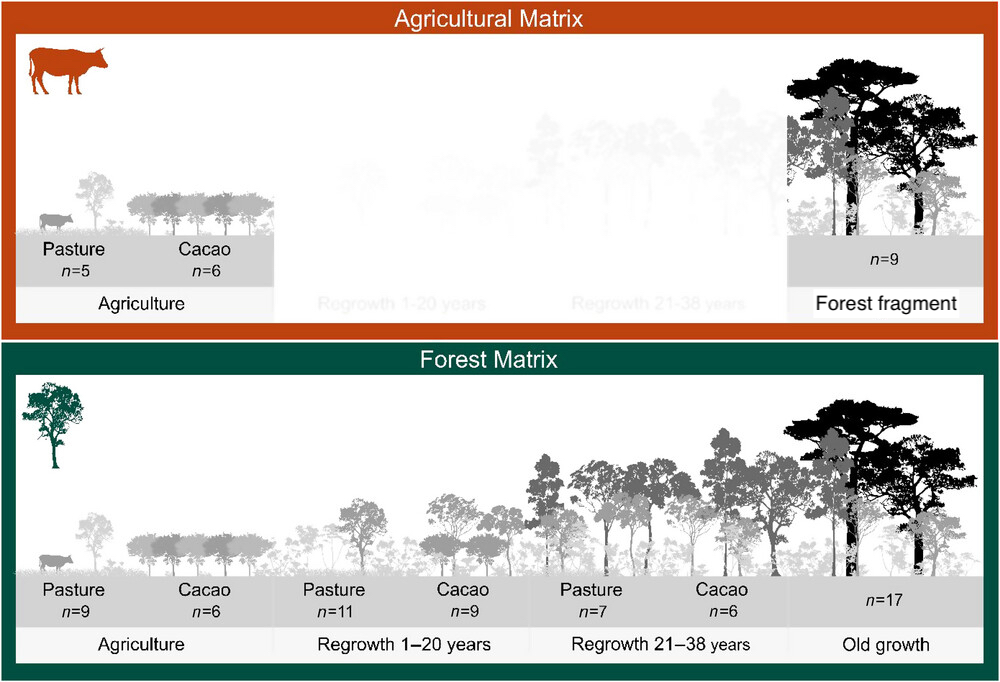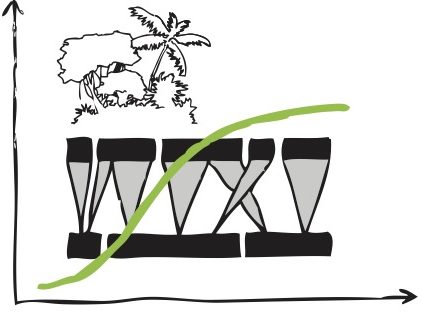Acoustic monitoring is becoming increasingly important for evaluating the biodiversity and conservation value of sites across land use or regeneration scenarios. A team led by Jörg Müller and his lab at the University of Würzburg monitored bird sounds using recorders installed in 85 study plots in the Canandé region of Ecuador. A total of 334 bird species were identified in pastures, cacao plantations and secondary and old-growth forests. There were clear differences in bird species composition, as well as functional and phylogenetic composition, and several sound indices between habitats. The study was now published by Sonja Kümmet and coauthors in Conservation Letters.
Their results show that sound indices can be effective proxies for assessing restoration success and confirmed that bird communities in secondary forests transition between agricultural areas and old-growth forests – consistent with our previous findings on entire soundscapes, bird traits and cicada sounds. For the first time, this study compared focal plots from the Reassembly project, which is located in an area with high forest cover, with plots outside the study area in an agricultural region to the south of the large forest reserves. Bird communities in this ‘agricultural matrix‘ differed significantly from those in the ‘forest matrix’, in both active pastures and plantations and in small forest fragments. These results highlight the importance of forest areas in larger landscapes for the biodiversity, conservation value and restoration potential of disturbed habitats. In turn, the results show the substantial biodiversity loss in heavily deforested regions, which are now common in tropical countries.


